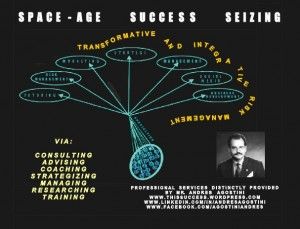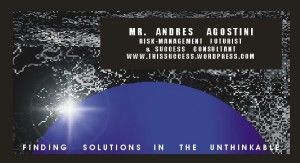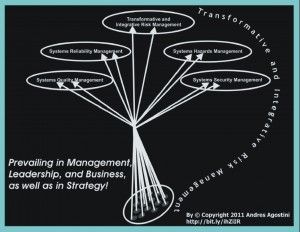LIST OF UPDATES (FEBRUARY 22 THROUGH 23/2014). By Mr. Andres Agostini at The Future of Scientific Management, Today! At http://lnkd.in/bYP2nDC
A light switch for pain
http://www.kurzweilai.net/a-light-switch-for-pain
World’s most powerful terahertz laser chip
http://www.kurzweilai.net/worlds-most-powerful-terahertz-laser-chip
Are bots taking over Wikipedia?
http://www.kurzweilai.net/are-bots-taking-over-wikipedia
Gigabit Internet may be coming to 35 US cities
http://www.kurzweilai.net/gigabit-internet-may-be-coming-to-35-us-cities
Stretchable, bendable optical interconnections for body sensors and robotic skin
http://www.kurzweilai.net/stretchable-bendable-optical-inter…botic-skin
New type of MRI ‘whole body’ scan could improve treatment of bone-marrow cancer
http://www.kurzweilai.net/new-type-of-mri-whole-body-scan-co…row-cancer
Intelligent alien life could be found by 2040, says SETI astronomer
http://www.kurzweilai.net/intelligent-alien-life-could-be-fo…astronomer
Zeroing in on how Alzheimer’s-disease toxins are created
http://www.kurzweilai.net/zeroing-in-on-how-alzheimers-disea…re-created
A drug that can help wipe out reservoirs of cancer cells in bone marrow
http://www.kurzweilai.net/a-drug-that-can-help-wipe-out-rese…one-marrow
Apple patents health-and-fitness monitoring headphones
http://www.kurzweilai.net/apple-patents-health-and-fitness-monitoring-headphones
Chips that listen to bacteria
http://www.kurzweilai.net/chips-that-listen-to-bacteria
Growing number of chemicals linked with brain disorders in children
http://www.kurzweilai.net/growing-number-of-chemicals-linked…n-children
New multilayer graphene structure allows ‘ultraprecise,’ ‘ultrafast’ water filtering
http://www.kurzweilai.net/new-multilayer-graphene-structure-…-filtering
Developing World Surpasses the Developed in Growing GMO Crops
Developing World Surpasses the Developed in Growing GMO Crops
New Battery Technologies May Make EVs Ubiquitous
A Handheld Device That Can Diagnose Diseases And Drug Resistance In 15 Minutes
http://www.fastcoexist.com/3026100/fund-this/a-handheld-devi…15-minutes
A World Without Car Crashes
http://www.theatlanticcities.com/commute/2014/02/world-witho…22919200=1
The cars we’ll be driving in the world of 2050
http://www.bbc.com/future/story/20131108-what-will-we-be-driving-in-2050
The city of 2050
http://www.bbc.co.uk/news/technology-23524249
11 Predictions for the World in 2030 That May Sound Outrageous Today but not in the Future.
http://www.ilookforwardto.com/2010/11/10-predictions-for-203…no-lo.html
U.S. Intelligence Agencies See a Different World in 2030
http://www.bloomberg.com/news/2012-12-10/u-s-intelli…-2030.html
China Factory Data Show Slowdown Risk as Xi Limits Credit
http://www.bloomberg.com/news/2014-02-19/chinese-man…onths.html
Can Homemade Goods Become The Global Brands Of Tomorrow?
http://www.forbes.com/sites/johnowrid/2014/02/19/can-homemad…-tomorrow/
America’s Fusion Race With China Is Heating Up, So Why Is Washington Going Cold?
http://www.defenseone.com/ideas/2014/02/americas-fusion-race…old/78848/
Why Wearable Tech Will Be as Big as the Smartphone
http://www.wired.com/gadgetlab/2013/12/wearable-computers/
This Ring Scans Text And Reads It Aloud For Visually Impaired People
http://gizmodo.com/this-ring-scans-text-and-reads-it-aloud-f…socialflow
Smart Shoes Could Help Runners Hit Their Stride
http://www.livescience.com/41844-smart-running-shoes-improve-runners-gait.html
‘We need the iPhone of guns’: Will smart guns transform the gun industry?
http://www.washingtonpost.com/local/we-need-the-iphone-of-gu…story.html
How The Knowledge Economy Is Redefining Work
http://www.fastcompany.com/3026566/leadership-now/how-the-kn…ining-work
Bitcoin Exchange Prices Plummet as Investors Brace for Bankruptcy
http://www.wired.com/wiredenterprise/2014/02/mtgox-2/
Google prepares 34-city push for ultra-fast Fiber service
http://www.reuters.com/article/2014/02/19/us-google-fiber-idUSBREA1I1ZT20140219
Some predict computers will produce a jobless future. Here’s why they’re wrong.
http://www.washingtonpost.com/blogs/the-switch/wp/2014/02/18…yre-wrong/
Quantum Microscope May Be Able to See Inside Living Cells
http://www.wired.com/images_blogs/wiredscience/2014/02/Layout.jpeg
Looking ahead: what will the world be like in 2064?
http://www.chinapost.com.tw/editorial/world-issues/2014/01/0…-ahead.htm
QUOTATION(S): “…Now, for the first time, we are observing the brain at work in a global manner with such clarity that we should be able to discover the overall programs behind its magnificent powers…”
AND
“…When Queen Victoria was in her prime, an Englishman, Charles Darwin, discovered a fundamental truth that shook mankind so severely that it remains today a matter of extreme distress and massive denial. Darwin realized that life on our planet is not the recent and fixed product of deity-mediated special creation, but has been constantly changing over a long span of time … The paleontologist who followed Darwin have taught us that time has no respect for species. Whole dynasties of life have been swept away and replaced with new ones. More than 65 million years ago, the world was filled with swift, deadly meat-eaters, including huge tyrannosaurs stalking elephant-sized horned dinosaurs and duck-billed herbivores. Flying pterosaurs were as big and heavy as sailplanes. Small, graceful, predaceous dinosaurs had binocular vision, big brains, and grasping hands. After 170 million years of successful evolution, they achieved the height of variation and power. Resplendent and numerous on the fertile Cretaceous plains, how could it be that within a few years they all would be gone forever? This chilling story suggests a ticking clock for humanity, as well; dare we think of our own extinction? There is ticking clock for humanity, and it may be mere seconds before midnight. TOMORROW IS UPON US, AND WHAT IS ABOUT TO HAPPEN IN THE NEW DAY IS FAR, FAR STRANGER THAN MOST PEOPLE DARE TO THINK … Even Darwin did not realize how right he was, or how far evolution will take us. We should not fault Darwin for his lack of vision. Darwin lived in a time when the modern scientific revolution was just beginning. It was also a time of steam engines, gas lamps, and phrenology. Science, in our late 20th century sense, was still a few years away. Yet even today, few nonscientists have more than an inkling of how life evolved or how technologies such as the automobile, the light switch, or the airplane actually work … WE LIVE IN A HIGH-TECHNOLOGY WORLD, WITH LITTLE APPRECIATION FOR HOW THINGS GOT THE WAY THEY ARE…”
AND
“…Man, incurable futurist, is the only traditionalist animal…”
AND
“…A person’s world equates to the size his (her) own vocabulary…”
CITATION(S): “…Wealth is concentrated and portable. MIT faculty and alumni produce as much wealth as all but Twenty-Two Countries In The World…”
AND
“… [The human being] experiences himself, his thoughts and feelings as something separated from the rest — a kind of optical delusion of our consciousness. This delusion is a kind of prison for us, restricting us to our personal desires and to affection for a few persons nearest to us. Our task must be to free ourselves from this prison by widening our circle of compassion to embrace all living creatures and the whole of nature in its beauty…”
AND
“…Yet the opportunities and challenges do not pause. The forces of change are in fact accelerating as technology, communications, and mobility link us in a blurring and buzzing globalizing world.… The image of this future became clearer when we and 40 executives and thought leaders closely examined five specific technology areas and explored their implications for society, business, and government. We examined biotechnology, cyber-technology, nanotechnology, ubiquitous sensing, and wild cards from science and technology. We asked the thought leaders to apply their projections in five crosscutting areas to identify the key technology convergences that would most affect or disrupt society in 2025: economy and wealth, energy and the environment, health and demographics, infrastructure, and governance .… We learned that the technologies were changing in ways that made traditional distinctions between disciplines and areas of science decreasingly relevant. Biotechnologists regularly describe nano-scale developments. Nanotechnologists apply insights from genome sequencing. Research is spread, enhanced, and stolen with cyber tools. Research will lead to carbon-free or carbon-neutral technologies that disrupt industries and policies. The blurring of boundaries between sciences are creating convergences. Breakthroughs across disciplines are stimulating accelerating insights and applications…”
AND
“…Knowledge is being created at such a rate that much of what we know will soon be obsolete .… The technological developments maturing between now and 2025 and the innovative ways they may be applied reflect an acceleration and shift that can seem both promising and challenging to decision makers. In the Industrial Age, developments in steam power, combustion engines, automobiles, aerospace, and telephony seemed slow to mature – their development and spread required large industrial infrastructures. In the Information Age, developments in bio, nano, cyber, and sensors are possible with a smaller and more differentiated infrastructure, and they are occurring simultaneously around the globe. Global information networks are increasing the pace of this technological innovation. This deeper, more widely spread development of knowledge is different from our recent past and portends further changes .… The convergences of bio, nano, cyber, sensors and wild card technologies are causing even greater acceleration of change. But at the same time, knowledge is being created at such a rate that much of what we know about these technologies and their application rapidly becomes obsolete as it is overtaken by newer discoveries. Our institutions will be challenged to respond to the combination of these technological changes and the many other drivers of change simultaneously. We expect many systems and institutions to be desynchronized by these changes and efforts to resynchronize them will add to the sense of disruption that many people feel .… Many thought leaders we worked with in this effort are highly optimistic. Nearly all who contributed to these findings see technological developments as promising, and as stimuli for new opportunities. At the same time, some cautioned about vulnerabilities and called for leadership and action to address these vulnerabilities before we feel their impact. This report serves as one input to decision makers who can aid us in adapting with the changes and creating our future…”
AND
“… In the mid-1980s a study by Shell suggested that the average corporate survival rate for large company was about half as long as that of a human being. Since then the pressures on firms have increased enormously from all directions ─ with the inevitable result that business life expectancy is reduced still further. Many studies look at the changing composition of key indices and draw attention to the demise of what were often major firms and in their time key innovators. For example, Foster and Kaplan point out that of the 500 companies originally making up the Standard & Poor 500 list in 1957, only 74 remained on the list through to 1977. Of the top 12 companies which make up the Dow Jones Index in 1900 only one ─ General Electric ─ survives today. Even apparently robust giants like IBM, GM or Kodak can suddenly display worrying sings of mortality, whilst for small firms the picture is often considerably worse since they lack the protection of a large resource base … Some firms have had to change dramatically to stay in business. For example, a company founded in the early nineteenth century, which had Wellington boots and toilet paper amongst its product range, is now one of the largest and most successful in the world of telecommunications business. Nokia began life as a lumber company, making the equipment and supplies needed to cut down forests in Finland. It moved through into paper and from there into the ‘paperless office’ world of IT ─ and from there into mobile telephones … Another mobile phone player ─ Vodafone Airtouch ─ grew to its huge size by merging with a firm called Mannesmann which, since its birth in 1870s, has been more commonly associated with the invention and production of steel tubes! TUI owns Thomsom (the travel group) in the UK, and is the largest European travel and tourism services company. Its origins, however, lie in the mines of old Prussia where it was established as a public sector state lead mining and smelting company!…”
NEWEST, PRACTICAL PRINCIPALS (TENETS) TO SEIZE SUSTAINABLE PROFESSIONAL, MANAGERIAL AND BUSINESS SUCCESS TENTES: (21) Step outside the boundaries of the framework’s system when seeking a problem’s solution. (22) Within zillion tiny bets, raise the ante and capture the documented learning through frenzy execution. (23) “…Moonshine…” and “…Skunks-work…” and “…Re-Imagineer…” it all, holding in your mind the motion-picture image that, regardless of the relevance of “…inputs…” and “…outputs,…”, entails that the highest relevance is within the sophistication within the THROUGHPUT.
BOOK(S): What Matters Now: How to Win in a World of Relentless Change, Ferocious Competition, and Unstoppable Innovation… by Gary Hamel. ISBN-13: 978–1118120828.
N.B.: Quotations, Citations and Success Tenets are by the Futuretronium Book.
Regards,
Mr. Andres Agostini
Risk-Management Futurist and Success Consultant
http://lnkd.in/bYP2nDC


